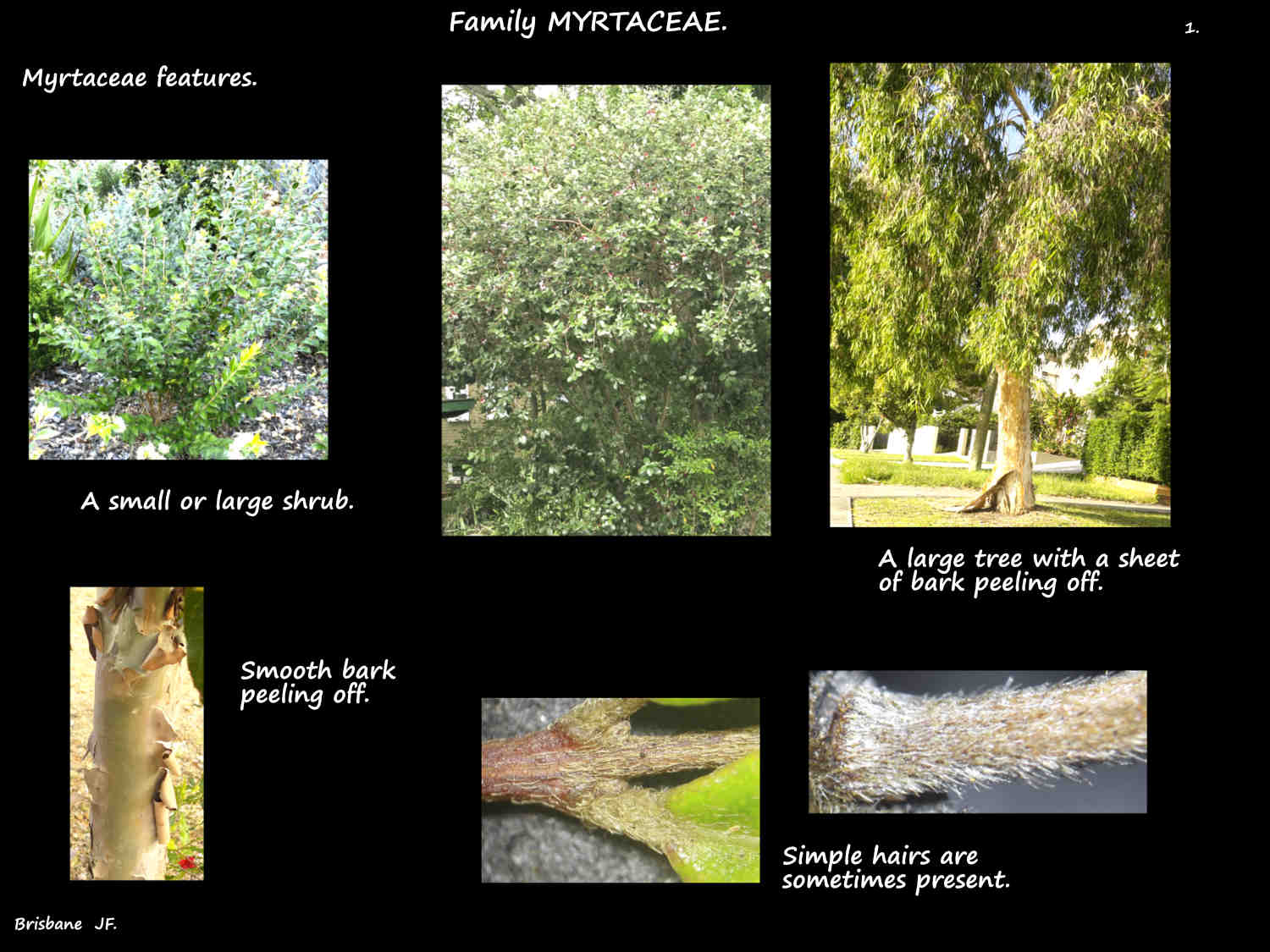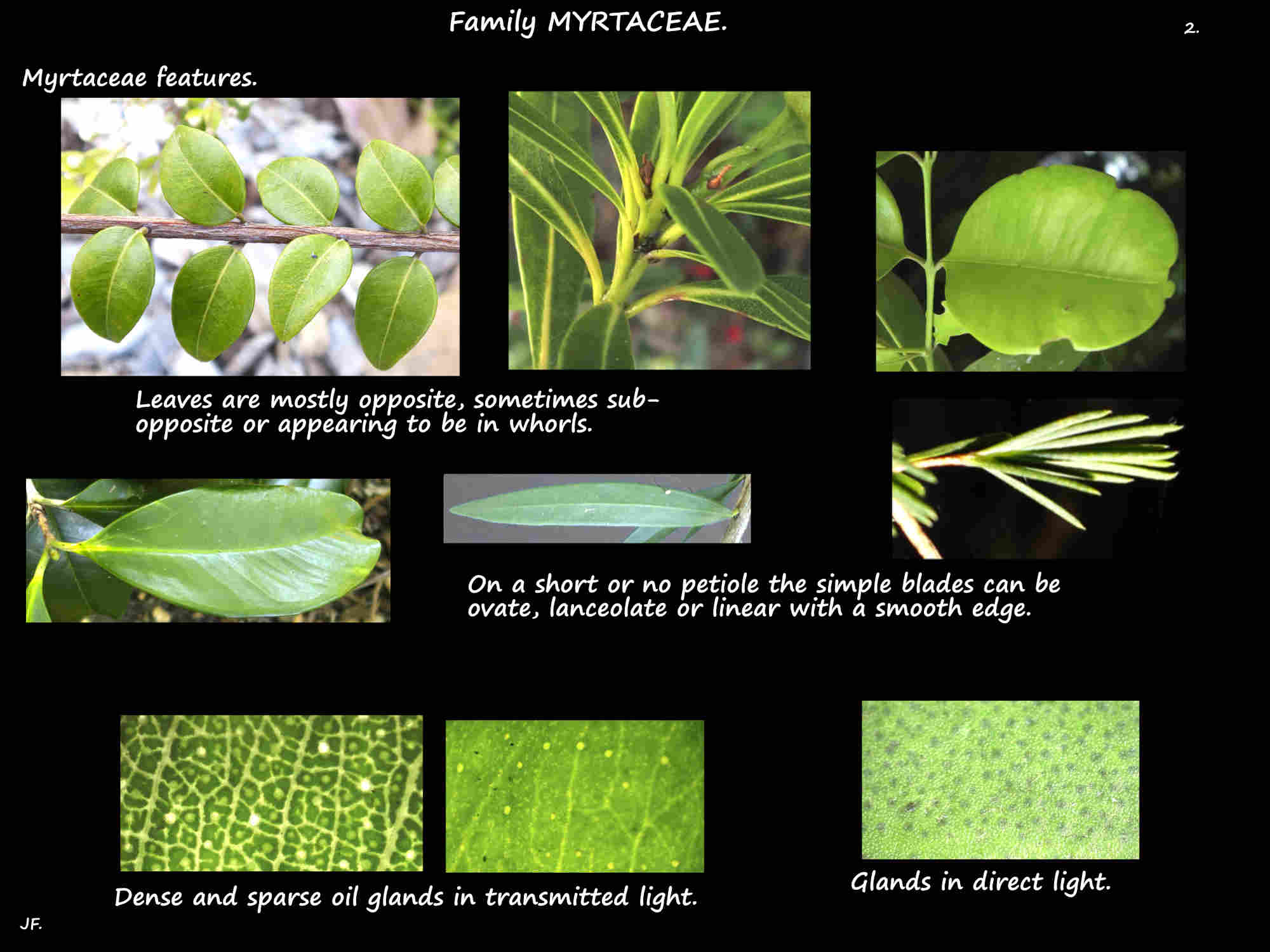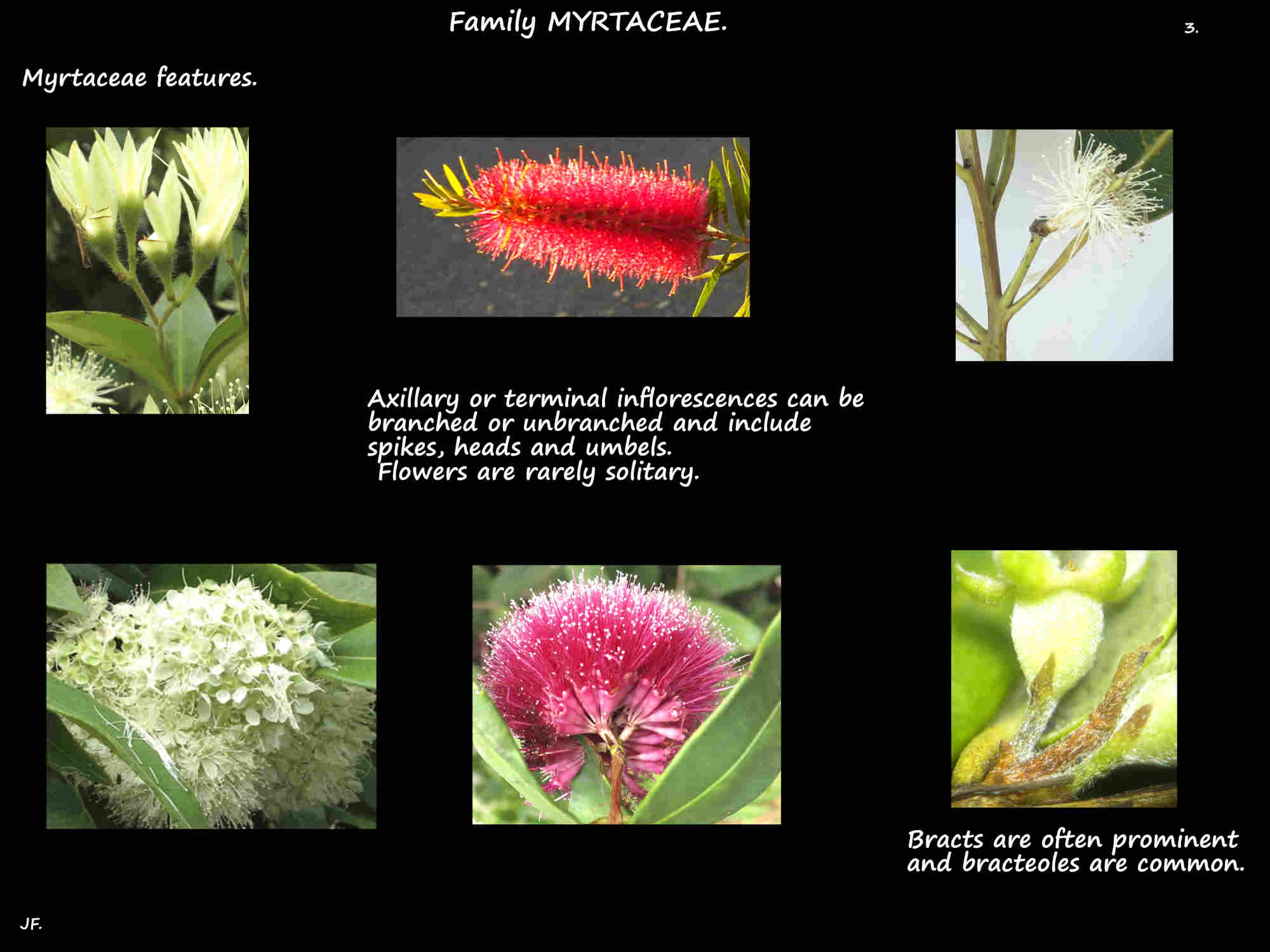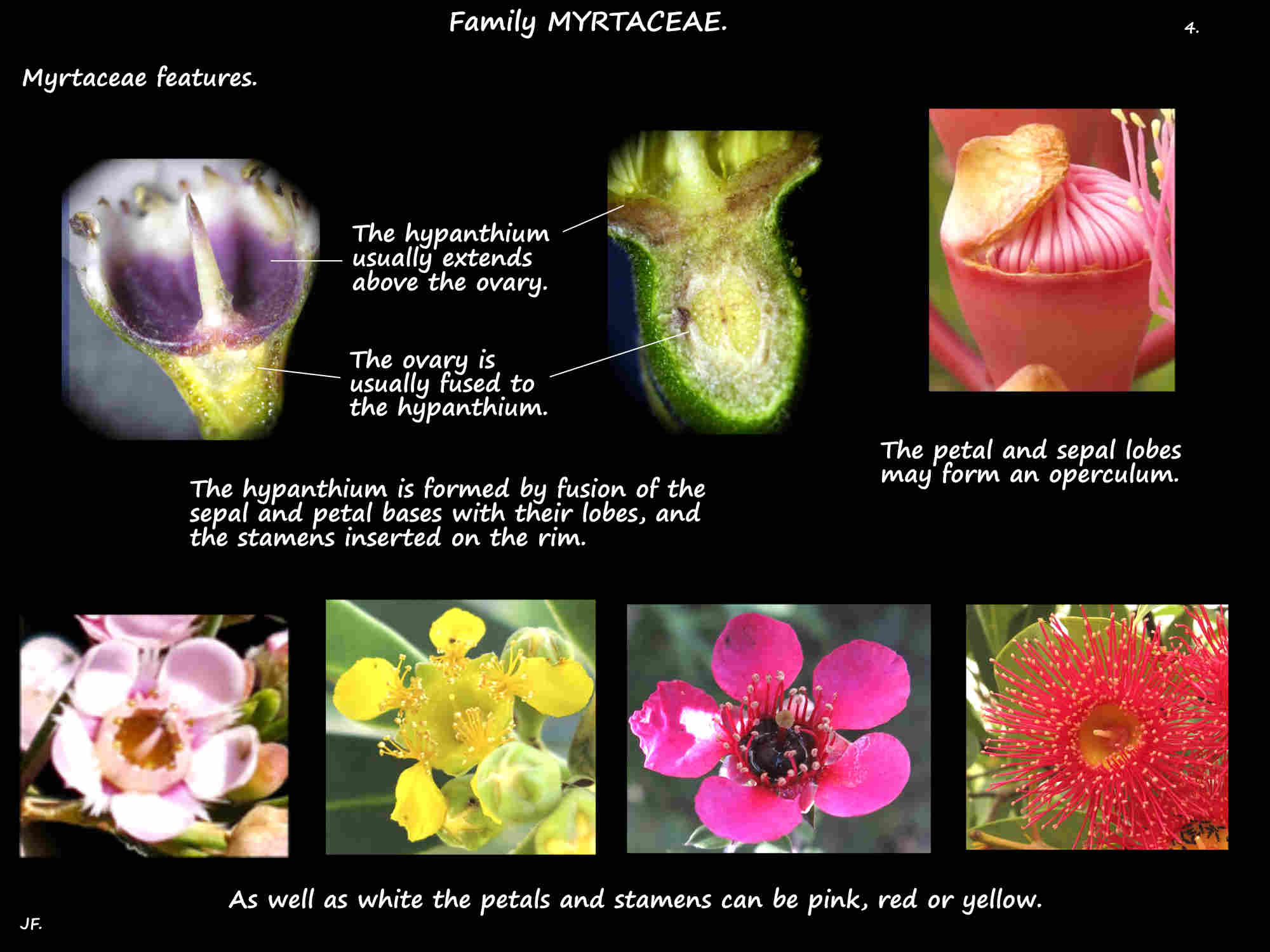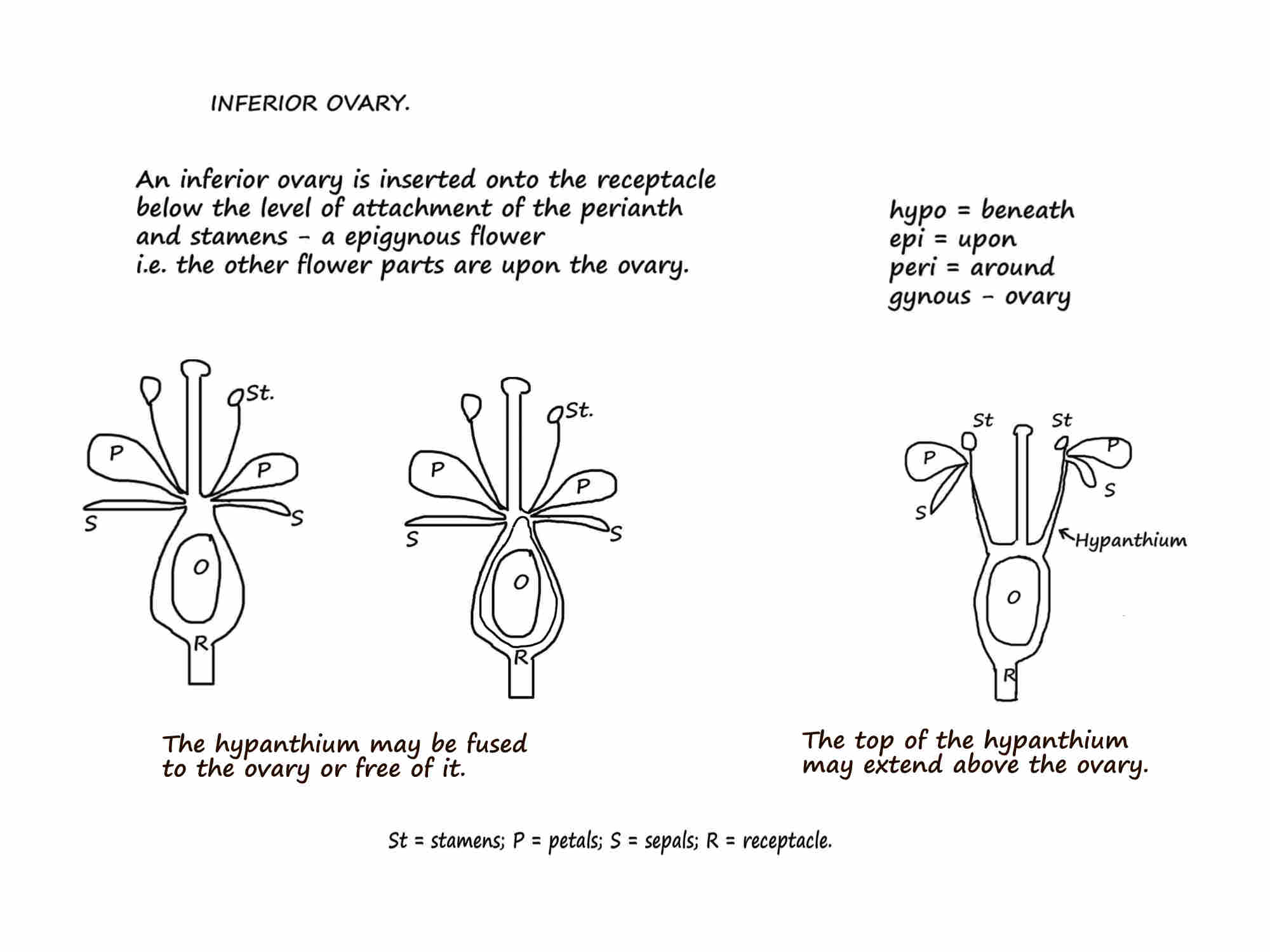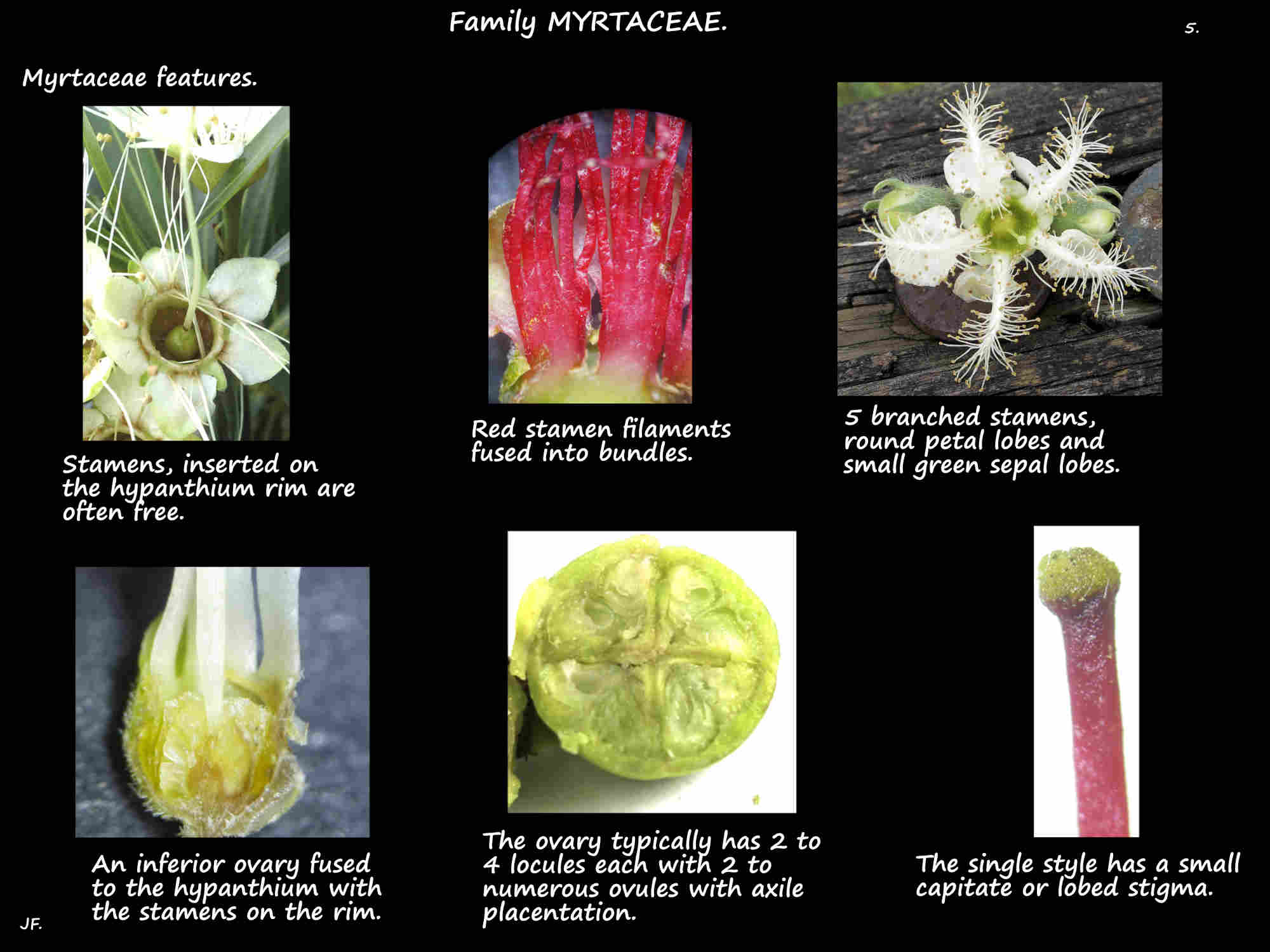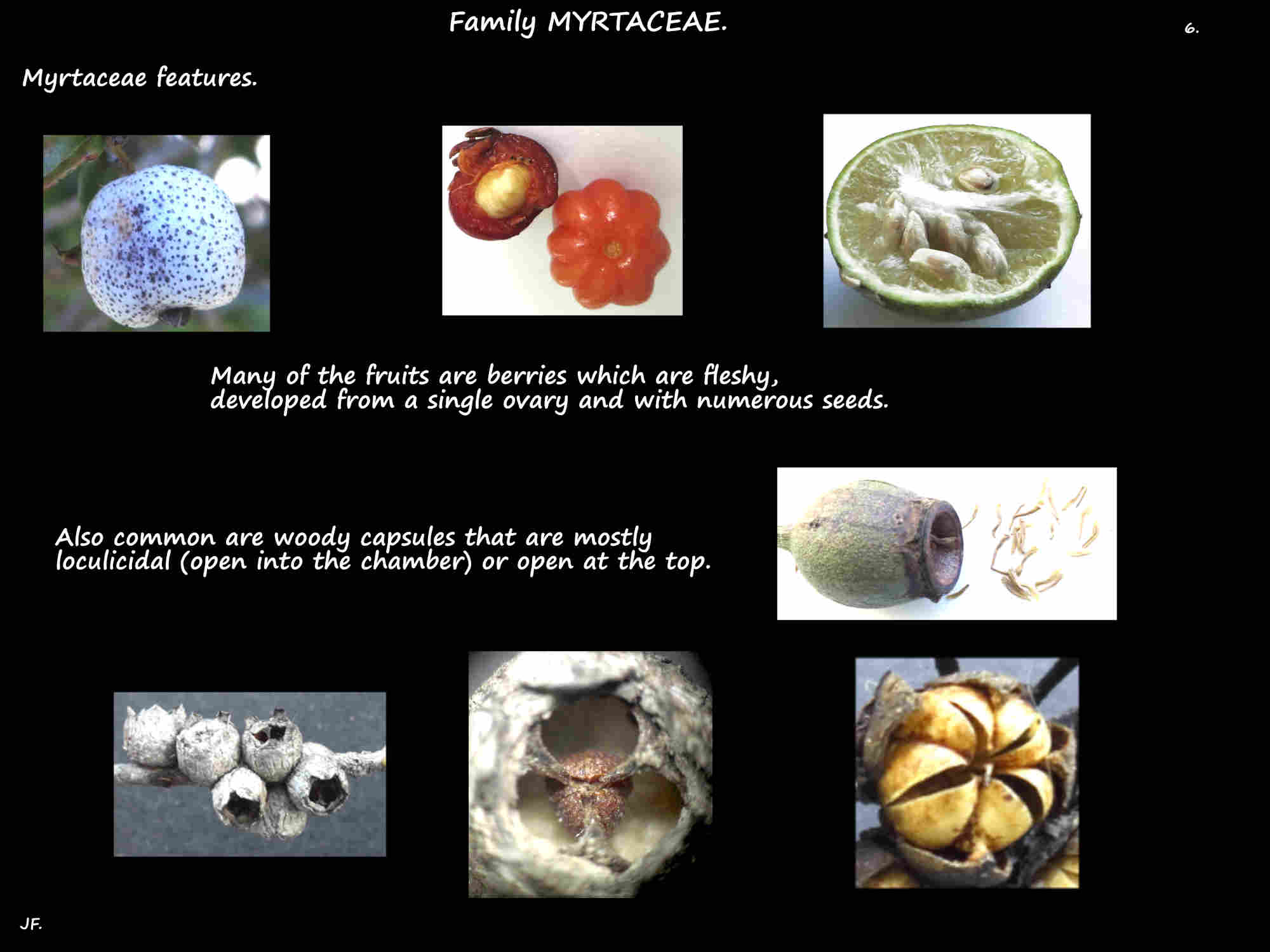Myrtaceae.
The Myrtle Family is a large one found mainly in the warmer parts of Australia and America and also Africa and Asia.
Various sources recognise around 100 to 144 genera with 3000 to almost 6,000 species.
The Plant List accepts 144 genera and 5,774 species with 7378 synonyms.
Around 70 genera are native to Australia.
The current classification has 2 Subfamilies – Psiloxyloideae with 2 tribes and Myrtoideae with 15 tribes
including Backhousieae, Eucalypteae, Leptospermeae, Lophostemoneae, Melaleuceae, Metrosidereae,
Myrteae, Syzygieae, Tristanieae and Xanthostemoneae.
Genera include Angophora, Austromyrtus, Backhousia, Callistemon, Corymbia, Eucalyptus, Eugenia, Leptospermum,
Lophostemon, Melaleuca, Metrosideros, Myrtus, Syzygium, Tristaniopsis, Waterhousea and Xanthostemon.
With such a large family the features are variable and there is no one defining feature common to them all.
There are exceptions to many of the most common features noted below.
They are evergreen woody trees and shrubs with very few herbs.
The often smooth bark on older trees flakes off.
There may be simple hairs and most or all have essential oils in the small branches, leaves and flowers.
The leaves are mostly opposite, sometimes sub-opposite and rarely alternate or whorled.
Some are held at different positions in relation to the stem.
They can have a short or no petiole and there are no, or tiny stipules.
The simple soft or leathery blades may be linear, oblong, lanceolate or ovate with a smooth edge.
They are usually dotted with glands.
Inflorescences can be terminal, axillary or arise between the nodes (intercalary).
Intercalary ones may start between the nodes or originally be terminal but the stem then continues to grow past it.
It is rare to see a single flower as most are clusters with the flowers variously arranged in often complex patterns.
They can be a spike, a panicle (branched), a dense head or a corymb which has a flat top as the flowers
lower down the stem have longer stalks.
Bracts are usually conspicuous and bracteoles are common.
Flowers, almost always bisexual and radially symmetric may or may not be on a pedicel.
There is a hypanthium formed by the fusion of the bases of the sepals and petals.
It is usually fused to the ovary and extends above it.
The calyx has 4 or 5 (0, 3 or 6) sepals with lobes that are mostly free.
Sometimes they are fused with, or stuck to the petals to form a lid or operculum that falls off.
The operculum is sometimes referred to as a calyptra but that term is more often used in describing moss capsules.
The corolla has 4 or 5 (0, 3 or 6) petal lobes on the rim of the hypanthium.
The often circular petal lobes come white, red, pink yellow or purple.
They may form an operculum with the sepals.
The many (rarely only 4 or 5) stamens, in several whorls also insert onto the hypanthium.
The filaments may be separate, fused into a tube or into bundles.
They may be of different lengths and can be branched.
The anthers are variously fixed and open inwards mostly through long slits.
There may be an appendage with a gland on the connective between the pollen sacs.
The stamens are often the most conspicuous part of the flower.
As well as white or yellow they can also be red or blue.
A nectiferous disc may be present on top of an inferior ovary or nectaries may line the inner walls of a free hypanthium.
The inferior (occasionally part inferior or superior) ovary may be fused to, or free of the hypanthium.
Formed from 2 to 4 (5 or more) fused carpels it usually has 2 to 4 (1 up to 16) locules.
Each locule has 2 to many ovules mostly with axile placentation.
There is a single apical style with a small spherical or lobed stigma.
The fruit are mostly berries or capsules that are mainly loculicidal.
Each locule has 1 to many seeds that sometimes have a wing.
The sepal lobes commonly remain attached to the fruit.
Rarely the fruit is a nut or drupe.
The main features are that they are shrubs or trees; they have simple, opposite and gland dotted leaves
that are aromatic when crushed; flower parts are typically in 4’s or 5’s; a hypanthium is present;
there are many stamens and a mostly inferior ovary.
J.F.

